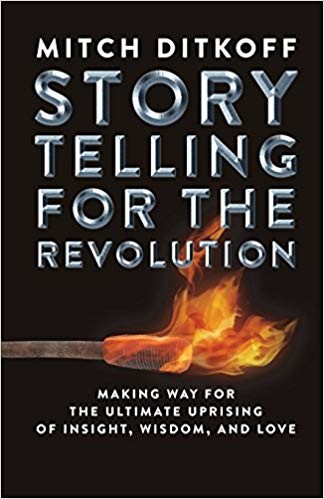The Real Value of Confusion

Are you confused about what's going on in your life these days or how to proceed with your most challenging project? Baffled? Bamboozled? If so, take heart! Confusion is not always a bad thing. In fact, it's often a necessary part of the creative process.
The weirdness enters when you start judging yourself for being confused. Then, instead of benefiting from this normal stage of "not knowing" you end up in endless rounds of self-talk, procrastination, and worry.
What is confusion, really? Technically speaking, it's a state of mind in which the elements you are dealing with appear to be indiscriminately mixed, out of whack, or unable to be interpreted to your satisfaction.
Everyone from Einstein to Mickey Mouse has had this experience. It comes with the territory of trying to innovate. Most of us, unfortunately, have a hard time acknowledging it.
"Not knowing" has become a euphemism for "ignorance". And so begins our curious routine of appearing to know and giving bogus answers -- to ourselves and others -- in a pitiful attempt to mask our confusion and maintain a sense of control, brilliance, and selfhood.

Our discomfort with not knowing prevents us from mining the value of this potentially fertile time of dislocation.
Picasso understood. "The act of creation," he said, "is first of all an act of destruction."
Indeed, great breakthroughs often emerge after times of dissolution, chaos, and confusion. Wasn't the universe itself created out of chaos?
llya Prigogine, a leading brain researcher, describes this phenomenon as the "Theory of Dissipative Structures". Simply put, when things fall apart, they eventually reorganize themselves on a higher level (if they don't first become extinct).
There is no need to fight confusion. Let it be. It's a stage we must pass through on the road to creation. Fighting confusion only makes it worse -- like trying to clean a dirty pond by poking at it with a stick.
And, besides, even while our conscious mind is telling us we're confused, our subconscious mind is processing a mile a minute to come up with some amazing solutions. In the shower. While we're exercising. Even in our dreams.
Look at it this way...
First, we refuse (to have our status quo threatened). Then, we get confused (trying to sort out all the new input). Then, we try to diffuse the process (by regressing or denying.) Eventually, we get infused (inundated by new insights). And, finally, we get fused (connecting with previously unrelated elements to form a new and unified whole).
Your next step? Allow confusion to be what it is -- the catalyst for more elegant outcomes. And if you really can't stand the confusion, here are seven simple things you can do to go beyond it:
1. Take a break from the problem at hand
2. Identify what's confusing you. Name it
3. Talk about your confusion with friends
4. Seek out missing information
5. Reframe your problem, starting with the words "How can I?"
6. Pay attention to your dreams and other clues bubbling up from your subconscious
7. Maintain a longer term perspective ("this too shall pass")
Comments
Thank you so much Mitch for sharing so much of your wisdom and knowledge.... always grateful.
Posted by: Emilia Smith ![[TypeKey Profile Page]](https://www.ideachampions.com/weblogs/nav-commenters.gif) at June 2, 2010 09:01 AM
at June 2, 2010 09:01 AM
Thanks, Mitchell.
A VERY well timed reminder!
Posted by: Michelle Cameron ![[TypeKey Profile Page]](https://www.ideachampions.com/weblogs/nav-commenters.gif) at June 2, 2010 12:06 PM
at June 2, 2010 12:06 PM
Since many times I find myself in a state of confusion, I find this clarity about confusion...very refreshing! Perhaps we can think of those times when we are in confusion of really being in a state of "becoming". I'd much rather be, becoming myself!
Posted by: Lynn Kindler ![[TypeKey Profile Page]](https://www.ideachampions.com/weblogs/nav-commenters.gif) at June 2, 2010 02:34 PM
at June 2, 2010 02:34 PM
love the way its articulated: refuse, confuse, diffuse, infuse, fuse...easy to remember.
Also like how Lynn calls confusion 'a state of becoming'.
Posted by: Peter11s ![[TypeKey Profile Page]](https://www.ideachampions.com/weblogs/nav-commenters.gif) at June 12, 2010 11:00 PM
at June 12, 2010 11:00 PM
Great post. I've learned to make use of #6. When I have a knot to untangle, I think about it as I fall asleep, and often it's untangled when I awake. The downside is when my subconscious is so eager to deliver the message it awakens me at 2:30 am.
Posted by: Artistsroad.wordpress.com ![[TypeKey Profile Page]](https://www.ideachampions.com/weblogs/nav-commenters.gif) at March 17, 2011 12:17 PM
at March 17, 2011 12:17 PM
Patrick: Yes, #6 is powerful. Rene Descartes supposedly came up with the Scientific Method in a dream. Elias Howe figured out the final design of the lockstitch sewing machine in a dream. I once invented an entirely new creative thinking technique (Idea Lottery) in a dream and then, the next day, tried it out in a live workshop with a client. It was the highest rated activity of the day -- and I DREAMED IT.
Posted by: Mitch Ditkoff ![[TypeKey Profile Page]](https://www.ideachampions.com/weblogs/nav-commenters.gif) at March 17, 2011 12:27 PM
at March 17, 2011 12:27 PM
Patrick: Yes, #6 is powerful. Rene Descartes supposedly came up with the Scientific Method in a dream. Elias Howe figured out the final design of the lockstitch sewing machine in a dream. I once invented an entirely new creative thinking technique (Idea Lottery) in a dream and then, the next day, tried it out in a live workshop with a client. It was the highest rated activity of the day -- and I DREAMED IT.
Posted by: Mitch Ditkoff ![[TypeKey Profile Page]](https://www.ideachampions.com/weblogs/nav-commenters.gif) at March 17, 2011 12:27 PM
at March 17, 2011 12:27 PM
The solution that you propose might work or lead one to delusion since in step 2 of your solution you ask us to name the confusion. That is where I think the problem starts. Once we have named it we get strongly attached to it and might refuse to let go of our hold even in light of new ideas and thoughts. This is often true since you suggest 'redefining the problem in step 5. This might not be very liberating since we are forced to move around in circles with our previous thoughts and get trapped in the process.
Posted by: SparkingInsight ![[TypeKey Profile Page]](https://www.ideachampions.com/weblogs/nav-commenters.gif) at March 21, 2011 01:52 AM
at March 21, 2011 01:52 AM
“Sell your cleverness and buy bewilderment”
Rumi
Posted by: Jim the Improvisor ![[TypeKey Profile Page]](https://www.ideachampions.com/weblogs/nav-commenters.gif) at September 26, 2013 03:29 PM
at September 26, 2013 03:29 PM
Jim: Love it! Thanks!
Posted by: Mitch Ditkoff ![[TypeKey Profile Page]](https://www.ideachampions.com/weblogs/nav-commenters.gif) at September 26, 2013 03:31 PM
at September 26, 2013 03:31 PM
Post a comment
Thanks for signing in, . Now you can comment. (sign out)
(If you haven't left a comment here before, you may need to be approved by the site owner before your comment will appear. Until then, it won't appear on the entry. Thanks for waiting.)














